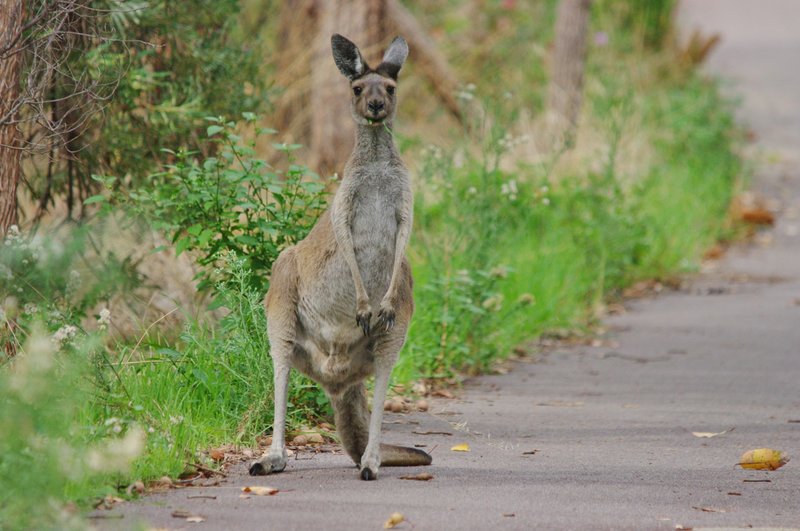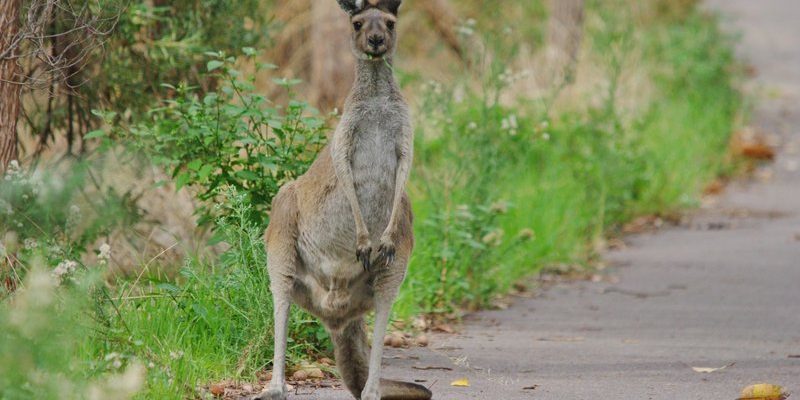
The Western Grey Kangaroo is one of Australia’s iconic animals, known for its distinct gray fur and powerful hind legs. These creatures are typically gentle and curious, but it’s important to remember that they are still wild animals. Just like you wouldn’t approach a bear or a lion, you should treat kangaroos with respect and caution. So, if you find yourself face-to-face with this magnificent creature, here’s what you should do.
Stay Calm and Assess the Situation
When encountering a Western Grey Kangaroo, the first thing you want to do is stay calm. These kangaroos can sense stress or fear, and being anxious might make them more wary of you. Take a deep breath and observe from a distance. Ask yourself:
– Is the kangaroo moving towards me or away from me?
– Does it seem relaxed or agitated?
By assessing its behavior, you can better understand how to proceed. If it appears calm, you might enjoy a moment of tranquility watching it. But if it looks like it’s on edge—perhaps thumping its tail or boxing its front legs—you might want to consider backing away slowly.
Keep Your Distance
It’s essential to maintain a respectful distance. Western Grey Kangaroos are generally shy and prefer to keep to themselves. Approaching too closely can make them feel threatened, which may lead to defensive behavior.
A good rule of thumb is to stay at least 50 meters away. This distance allows you to take photos and enjoy observing without stressing the animal. If you’re a wildlife photographer, use a zoom lens so you can capture those beautiful moments without intruding on their space.
If you’re with a group, remind everyone to stay quiet and avoid sudden movements. This way, you can enjoy the encounter without causing stress to the kangaroo or the people around you.
Do Not Feed the Kangaroo
You might be tempted to bring out a snack to share with the kangaroo, but resist that urge. Feeding wildlife can disrupt their natural foraging behavior and may even put them at risk. Foods humans eat can be harmful to kangaroos.
Kangaroos are well adapted to finding their own food, primarily munching on grass, leaves, and shoots. If you feed them, they might start to associate humans with snacks, which can lead to dangerous encounters down the line. So, stick to admiring them from afar, and save your snacks for later!
Observe from a Safe Position
Finding a good spot to observe the kangaroo safely can enhance your experience. If possible, position yourself behind a tree or a rock. This gives you a natural barrier and allows the kangaroo to feel less threatened by your presence.
While you’re observing, take note of its behavior. Is it grooming itself? Hopping around? Interacting with another kangaroo? These moments can offer a glimpse into their daily lives. Honestly, there’s something magical about watching these incredible creatures in their natural habitat. Just remember: your enjoyment shouldn’t come at the expense of their safety.
Know What to Do If It Approaches You
It’s not uncommon for a Western Grey Kangaroo to approach your area, especially if it’s curious. However, your reaction is crucial here. Here’s what you should keep in mind:
1. Stay Still: Don’t make sudden movements. If the kangaroo comes close, stand still and let it investigate. They’re naturally curious creatures.
2. Avoid Direct Eye Contact: Staring at a kangaroo can be interpreted as a threat. Instead, keep your gaze soft and relaxed.
3. Back Away Slowly if Necessary: If you feel uncomfortable or the kangaroo starts to close the distance too much, back away slowly. Sudden movements can startle it into an aggressive response.
Remember, a calm and respectful attitude can go a long way in ensuring both you and the kangaroo have a positive experience.
Understand Their Behavior
Western Grey Kangaroos have a rich emotional and social life. They communicate through body language, so knowing some signs can help you read the situation better. For instance:
– Thumping Tail: This is a warning sign. It signals to other kangaroos that there may be danger nearby.
– Boxing and Fighting: When male kangaroos spar, they use their front paws and legs. This behavior is normal during mating seasons but can be intimidating.
– Curious Posture: If a kangaroo stands upright on its hind legs, it’s likely just trying to get a better look at you.
Being able to decode these behaviors can make your encounter more informative and interesting. It’s like being a guest in their home—you’ll want to understand the rules of the house!
Leave No Trace
As with any wild encounter, it’s your responsibility to leave the environment as you found it. This means:
– Don’t litter: Carry out what you carry in.
– Stay on marked paths: This helps preserve the habitat and minimizes your impact on their environment.
By respecting their home, you contribute to the conservation of these magnificent creatures and their habitat. Plus, it’s all about enjoying nature while ensuring it remains as beautiful for future visitors.
Know When to Seek Help
If you witness a kangaroo that seems injured or in distress, it’s important to seek help. Contact local wildlife authorities or a national park service. They have professionals trained to handle wildlife emergencies safely.
Approach this situation as you would with any animal in trouble. Wildlife experts can assess the situation and provide the best care for the kangaroo, ensuring its well-being.
It’s easy to feel helpless in these situations, but knowing you can do something is empowering. Remember, the best encounters leave wildlife healthy and happy!
In conclusion, encountering a Western Grey Kangaroo in the wild is a remarkable experience. By staying calm, maintaining a respectful distance, and observing their behavior, you can enjoy a beautiful moment in nature without disrupting the peace. So, the next time you’re out exploring the Australian bush, keep these tips in mind. You never know what wonders await you!

